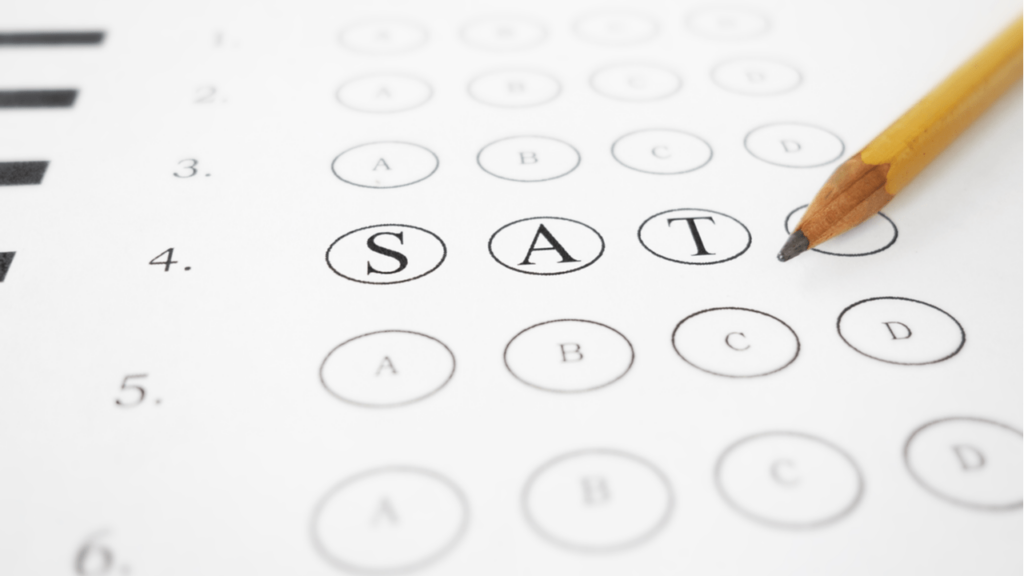SAT is an aptitude-based multiple choice question (MCQ) conducted the US college board for admission in American Universities. Since it is difficult to get a good SAT score, students can take a pre sat to get familiar with the SAT structure and pattern. Many colleges also offer scholarships to students depending on their PSAT scores.
Table of Contents
Pre SAT Test- Different Types
The majority of SAT applicants are high school students preparing to get admission to the best US universities. However, students in the eighth or ninth grade can also apply for PSAT. The following are the three different types of pre SAT exams based on eligibility, difficulty level, and scholarships.
PSAT 8/9
As the name suggests, this pre SAT exam is for students in the 8th and 9th grades. It is the first test in the SAT suite for assessments, which assesses skills that students require to succeed in college. PSAT 10 High school students can give PSAT 10 in the fall. The average score range for PSAT 10 is 320–1520. However, students who take the PSAT 10 will not be eligible for scholarships. PSAT/NMSQT This is the Preliminary SAT/National Merit Scholarship Qualifying Test for students in the 11th grade. However, high school students can also attempt the PSAT/NMSQT during the Spring. Similar to PSAT 10, the average score range for PSAT/NMSQT is also 320-1520. The national merit scholarships are only available to students studying in the US or to US citizens studying outside the US. International students are not eligible for the national merit scholarship.
Importance of pre SAT Test
Pre SAT test holds immense value for students who plan to study abroad, especially in the US. While it is not necessary to give PSAT, it is recommended as it gives students a head start for SAT preparations, and helps them realise their strengths and weaknesses. In simple words, PSAT is beneficial for the students to understand how much they have studied and what the scope of improvement is for the SAT. Even though the pre SAT exam is not as difficult as the SAT, it is necessary to score well in the exam. The pre SAT test scores are not sent to colleges. Here are some of the most significant benefits of taking pre SAT exam:
- The collective amount of scholarship available to the students who score well in the PSAT/NMSQT is $300 million. However, scholarships are not provided to international students.
- Students can self-assess their performance in the PSAT and can prepare a customised studying strategy for the SAT accordingly.
- The performance in PSAT also makes it easier for students to decide what Advanced Placement (AP) courses they can opt for in college.
PSAT Sections
There are four sections in the PSAT question paper; reading, writing, and language, and two mathematics sections. One maths section is to be solved without a calculator whereas, for the other maths section, students are allowed to use a calculator to solve maths questions. Students have to complete the pre SAT exam in 2 hours 45 minutes. Here is more detail about the three sections in the pre SAT test.
Reading section of the PSAT
The reading section contains 47 questions. 60 minutes are allotted for this section. Students will have to read 4-5 passages or comprehensions in this section and answer numerous questions based on what is written in the passage. The pre SAT test passages are mostly related to literature, social sciences, natural sciences, and historical documents. The passages in the PSAT are 500-750 words. The reading test in the PSAT comprises three question types. The first type is evidence-based questions that require students to select the statement that best supports the author’s argument in the passage. The next type of question is related to finding the meaning of a word in the context of the passage and the third type of question is about examining hypotheses or interpreting data. Students do not require prior knowledge of the subject. They just have to read the passages carefully, interpret them, and answer the questions.
- Writing and Language section:- Next is the writing and language section, which comprises 44 multiple-choice questions. Students need to mark all the questions in thirty-five minutes. This section tests the vocabulary, grammar, and editing skills of the students. The questions in the writing and language section mostly comprise four fiction passages of 400-450 words and arguments on topics related to science, history, world literature, political science, social studies, and career. Students have to find grammatical errors in the passages and rectify those.
- Maths section:- This is the last section that consists of the maximum number of questions in the PSAT. There are 48 questions in the maths section, which are to be attempted within 70 minutes. Students will find the majority of the questions in this section in the form of MCQ. However, some questions will require students to directly give their answers. The maths section is divided into two parts. Students are allowed to use a calculator to solve the first part, which comprises 13 multiple-choice and 4 grid-in questions. In the next part, calculators are not allowed. It comprises 27 multiple-choice and 4 grid-in questions. This section tests the knowledge of students in trigonometry, geometry, and algebra I and II. There are also a few problem-solving and data analysis questions in the maths section.
Pre SAT Exam Score and Marking Criteria
The score range for PSAT 8/9 is 240-1440 and is 320-1520 for both PSAT 10 and PSAT/NMSQT. Individual scores in all three sections are added to give the final PSAT score. Students can check their PSAT results online six-eight weeks after the test. For PSAT 8/9, the minimum score for eighth-grade students is 390 for the reading and writing section and 430 for maths. 9th-grade students should aim for a minimum of 410 and 450 scores in psat writing and reading, and psat maths sections, respectively. Students preparing for PSAT 10 should aim for a minimum score of 430 for the reading and writing section and 480 for the maths section. In 2021, the average PSAT scores for eighth-grade and ninth-grade students were 835 and 892, respectively. The average PSAT 10 score was 959. There is one point for each question in the PSAT. Also, there is no negative marking for wrong answers. So, students should try to attempt all the questions correctly. Even though Indian students are not eligible for scholarships through PSAT/NMSQT, they should prepare well to achieve a high score on the PSAT test as it lays a foundation for performing well on the SAT. The PSAT and SAT score analysis allows the college board to predict the
Preparation Tips for pre SAT Exam
PSAT is a standardised test for students who want to take the SAT. Achieving a higher score on the PSAT increases the possibility of scoring well on the SAT. Here are some beneficial PSAT prep tips for students.
- The best way to score well on PSAT and the SAT is to focus in the class. Since the PSAT mostly comprises passages and basic maths questions, students who sincerely pay attention in the classroom can easily get a good score.
- It is also crucial to understand the paper pattern of PSAT and prepare accordingly. Improve your reading skills by going through different types of passages, reading newspapers, books, and educational magazines.
- Students should practice as many maths questions as possible without a calculator. This will help them solve in-grid questions easily.
- It is better to set a target PSAT score and prepare a study strategy accordingly. Also, students can solve several PSAT practice papers by setting up a timer for themselves to ensure that they complete all the sections in time.
- Students can check the US College Board website and go through the official resources for PSAT preparation.
Conclusion
There are four SAT suite assessments for studying in the US; SAT, PSAT/NMSQT, the PSAT 10, and the PSAT 8/9. SAT is the final test, whereas the rest three types of PSAT are practice tests before students finally appear for the SAT. Students from 8th-12th grade are allowed to take different types of PSAT. However, students who give the PSAT/NMSQT in their 11th standard become eligible for scholarships. Students who give PSAT in their 8-10th grade do not qualify for receiving scholarships. They can reappear for the test in 11th grade. The PSAT/NMSQT is usually conducted in October every year, whereas the PSAT 10 is taken in February, March, and April on three different test dates. There are three different dates for appearing for the PSAT.
Frequently Asked Questions
Is it necessary to take the pre SAT Test?
It is not compulsory to give a pre SAT test before appearing for the SAT. Students can directly give the SAT. However, it is recommended to take the PSAT before giving SAT because students can practise well and prepare a strategy for SAT in advance.
How many times can students give the pre SAT exam?
Students are allowed to give the pre SAT test a total of three times from standard 8th to 12th. However, only one PSAT attempt is allowed per year. The majority of students appear for this test in the 11th grade because the scholarships are awarded based on the score for PSAT attempted in this grade.
What is the difficulty level of the pre SAT exam in comparison to the SAT?
Since PSAT is a practice test for SAT, the paper pattern and marking criteria are usually the same. However, the difficulty level of PSAT, especially for PSAT 8/9, is slightly lower than the SAT.
Are students in 8th or 9th grade allowed to give the PSAT 10 exam?
Yes, students in the 8th or 9th grade are allowed to give the PSAT 10 exam. However, the US College Board recommends that the 8-9th grade students must give the PSAT 8/9 test because the test is created keeping the knowledge and skills of the students in mind. They can give the PSAT again in the 10th standard.

















Have Questions? Get Guidance to reach your Dream University
Connect with India's finest counsellors and biggest study abroad community.
Get Guidance